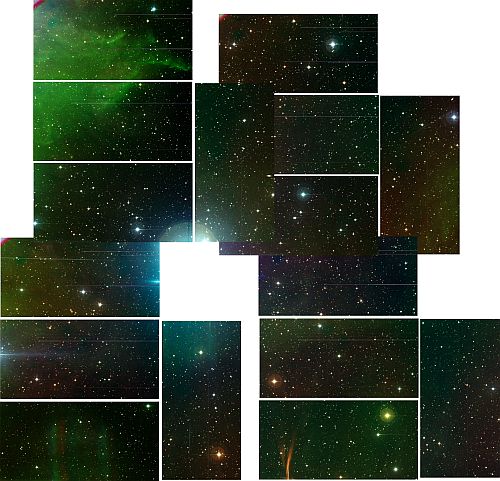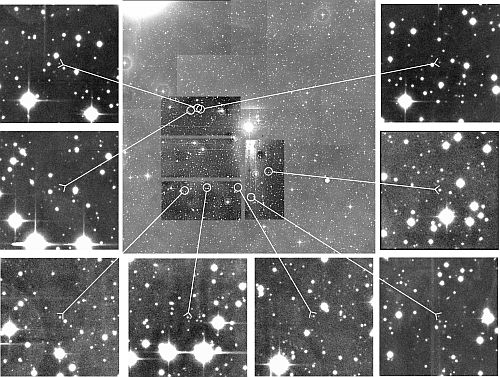 | |||
|
| Home > Public Information > Scientific Highlights > 2007 > Brown Dwarfs and Isolated Planetary-Mass Objects Might Follow the Same Formation Process |
Brown Dwarfs and Isolated Planetary-Mass Objects Might Follow the Same Formation Process | ||||
|
WHT+LIRIS, INT+WFC
A deep infrared survey of the young σ Orionis open cluster has revealed that brown dwarfs (BDs) and isolated planetary-mass objects (IPMOs) may share the same origin.
Using data from that survey, the astronomers searched for low-mass objects in the central region of σ Orionis down to 6 Jupiter masses and studied their mass distribution. They found no evidence for a mass cut-off implying that BDs and IPMOs probably form as an extension of the low-mass star formation process. The survey was built from data taken with the Wide Field Camera on the Isaac Newton Telescope and ISAAC on VLT's UT1 Antu. Deep I- and J-band images of a 0.22deg2 region close to the cluster center were obtained, and reaching limiting magnitudes of I~24.1 and J~21.8 respectively. LIRIS infrared spectrograph and imager on the William Herschel Telescope was also used to obtain some deep images in the H and Ks bands. And follow-up of candidates was performed using data from 2MASS survey, Spitzer Space Telescope, CFHT and TCS.
The survey yielded 30 very young cluster low-mass objects, among BDs and IPMOs. By studying their mass spectrum, or counting the number of objects per mass interval, the astronomers found a rising mass spectrum in the mass interval 0.11 and 0.006 solar masses implying that IPMOs could be as frequent as our Sun. Also, there is no direct evidence for the presence of an opacity-mass limit for objects formed via fragmentation and collapse of molecular clouds - any possible mass cut-off would lie below 0.006 solar masses or 6 Jupiter masses. Another interesting result of their research is that almost half of the studied BDs harbour protoplanetary discs.
|
| Top | Back |
|



